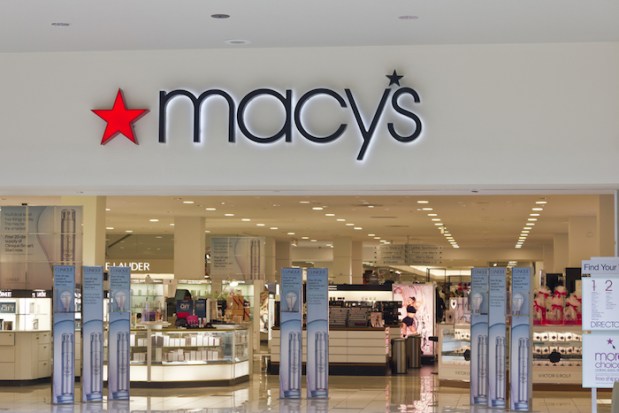Can Big Brands Survive On The Store-Within-A-Store?

Retailers as dependent on a brick-and-mortar footprint as Macy’s don’t always have the luxury of fixes to pick from if their stocks experience the continuous slide that the former tentpole brand’s has. As such, much of the pool of innovative tools currently being used by online and primarily omni-focused merchants is off limits to the hulking retailer, and its choice of life-saving interventions is limited to what it can do to manipulate the floorspace that it has.
As such, it’s very close to sink-or-swim when B&M merchants throw their lots in with the store-within-a-store concept, and Macy’s is giving the world a live look at its first attempt.
Where else but Columbus in the heart of Ohio, America’s test market, would Macy’s choose for its flagship for a new generation? That’s where its new 200,000-square-foot location will open June 25 to show off its new design philosophy, which according to Columbus Business First makes liberal use of the now-standard makeup and hair-drying bars that add a dash of entertainment into the shopping process. What’s less flashy but potentially more determinant to Macy’s rejuvenation, though, is its inclusion of several other retail brands in mini-stores around the floor. Bluemercury will run a dedicated cosmetics area, while Estee Lauder will also operate a “prototype shop” in the middle of the store.
The commitment to the store-within-a-store extends, ironically, beyond the physical. Customer service will be delegated out to brands, in some cases, with a personal stylist from Nautica tending to shoppers wandering in the men’s department. It’s all part of a philosophy that store manager Kathi Newton explained was created to give shoppers what they want, whether or not this is it.
“There’s so much we’re testing in this building,” Newton said. “Some of it may crash and burn, but you have to listen to the consumers.”
Whether Ohio shoppers are hankering fro the multi-brand in-store shopping experience remains to be seen, but Macy’s isn’t the first retailer to lease off portions of selling space to benefit its long-term goals. It just so happens, though, that the next two largest merchants to do so, Nordstrom and J.C. Penney, have seen mixed results at best and executive shakeups at worst as a result.
What should really concern B&M brands looking to the store-within-a-store as a saving grace is how consumers have reacted to those experiments. In some cases, it’s been an ambivalent response, while in others, the sight of other brands’ logos and stylings can feel to some like a betrayal of the original retailer’s identity. As Arnold Aronson, partner and managing director of retail strategies at Kirt Salmon, told The Chicago Tribune, bigger merchants like Macy’s with established reputations have a much harder time finding the right mix.
“[Merchants are] very conscious about maintaining their brand identity and how the store resonates with customers,” Aronson said. “A patchwork quilt doesn’t work for a major department store.”
When brands find themselves with a store full of patchwork boutiques and third-party kiosks, they forfeit something in a big way that can only be repaid with the highest of retail sacrifices, the CEO removal. That’s what happened to former J.C. Penney top dog Ron Johnson after his company’s experiment with the store-within-a-store ran afoul of consumer preferences to the extent that his successor immediately attached himself to a repudiation of that brand-diluting philosophy.
“There’s no reason to try and alienate customers who want to try and shop at J.C. Penney,” ex-J.C. Penney CEO Mike Ullman said of his predecessor in 2013.
Now, it’s up to Ohio consumers to see if their tastes for a varied in-store shopping experience have changed over those few short years.
